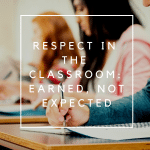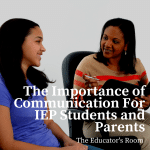 Contrary to what many might expect, most English Language Learner students are born in the USA, and come to school with at least a few useful phrases they can throw around on the playground. ELL students, like any other group, are a diverse bunch and all good teachers know it’s important to get to know kids one at a time.
Contrary to what many might expect, most English Language Learner students are born in the USA, and come to school with at least a few useful phrases they can throw around on the playground. ELL students, like any other group, are a diverse bunch and all good teachers know it’s important to get to know kids one at a time.
When a student is brand new to the USA, to the language, and/or to school itself, though, it can be more than a little overwhelming to know where to even start. Outside factors like your school’s population (Are there other kids in school who speak the language? Is there a “newcomer” or bilingual program?) may dictate how you respond. But as the ESOL teacher this is a situation where you’ll have to be an advocate.
1. Be welcoming. I hope this goes with out saying, but new kids in school should feel like it’s a safe place to be. That’s doubly true for ELL students who may have no idea what this strange place is or who these people are. Hope fully kids will have a chance to tour the school with their family before starting school. Lead that tour and introduce the student around. Meet their bus on their first day and help them find their classroom or home room.
2. Be available. I teach at the primary level and when I have students who are newcomers I have spent the first few days they are in school with them almost like a 1:1 aide. It’s usually not necessary for more than a few days (usually…) and this way I can help the student transition from teacher to teacher and be a consistent face throughout the first few days.
3. Be proactive. Find dictionaries, translators and first-language books and media for the student and their family. The student might need supplies, homework help, immunizations or medical records and be unable to ask or answer questions about any of it. They’ll need you to a go-between for any of these issues.
So, now that your newcomer is off the bus, registered, fed and knows where the bathroom is…now what?
Photo Book: This is a simple project that I’ve done with most of the newcomer students I’ve had. Take a camera around school and let the student take pictures of people and places they need to know about. Print the pictures, label them and it gives the student a visual record of school they can take home and share. Another layer could be having the student label the book in their language, or take it home to have a parent or caretaker do so.
Role Plays: The student needs the basics, right? How to ask for lunch, introduce themselves or ask for help. So make that fun. Write the script with the kids, have a classmate or two play the secretary or the teacher (that’s always popular) and have the students role-play those interactions. Start small (“Good morning!”) and build up from there.
Get Hands-On. Abstract topics, like the causes of the American Revolution, are not a good place to start. Kids learn by doing, so think about how you can engage newcomers with projects, crafts, art and any other approach that involves making a mess. Play-dough letters are always a favorite at the primary grades. Make models, write and sing songs and videos…I enjoy making maps of the school with my students. That lets us learn about directions, the compass, colors, shapes and basic geography.





